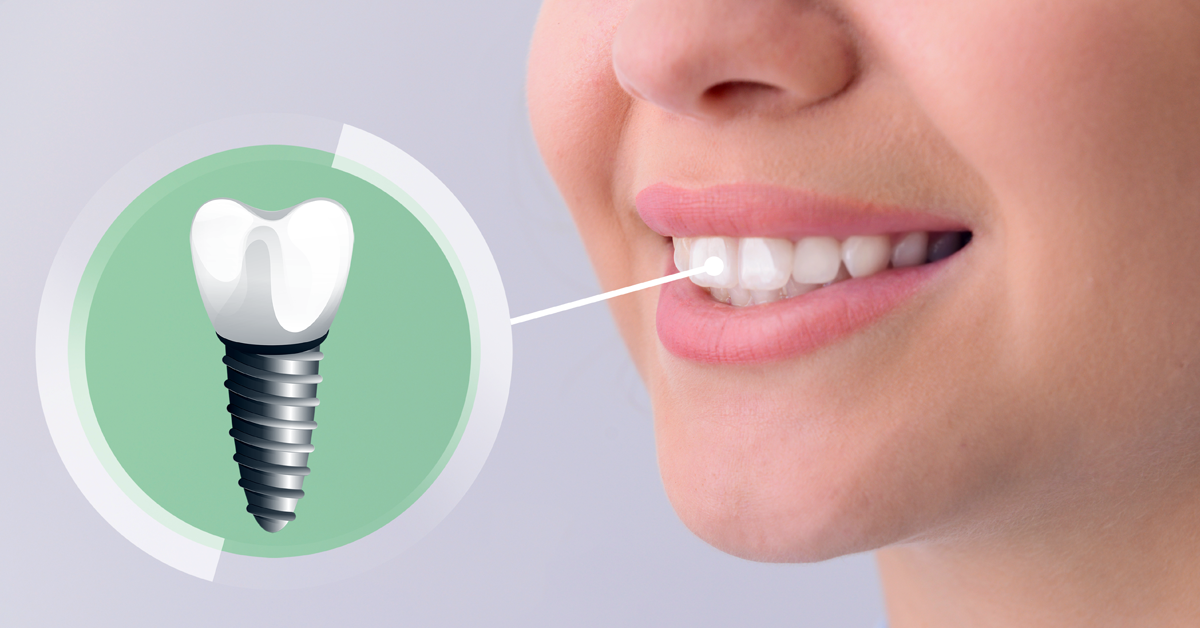Gum / Periodontal Disease

Periodontal disease, also known as gum disease, can often go unnoticed due to its lack of symptoms and little pain until it reaches a severe stage.
Periodontal disease affects the area around the teeth, progressively destroying soft tissues and bone. Ultimately, the teeth can become loose and fall out, or need to be taken out. An early form of periodontal disease is referred to as gingivitis, while more severe cases are referred to as periodontitis.
Gingivitis
Gingivitis is the inflammation of the gum caused by the build-up of plaque, a thick and sticky film of bacteria, on the teeth. Gingivitis is the mildest and the most common form of periodontal disease. Symptoms include redness and swelling around the gum margins, and bleeding when brushing or flossing. If your gums are red and irritated rather than pink and firm, you might be suffering from gingivitis. Gingivitis is easily treated if detected early with simple methods. Professional teeth cleaning along with an improved home oral care routine can successfully manage gingivitis and restore gums to health.
Periodontitis
Periodontitis is a more severe form of gum disease and is usually found in adults. Not only does periodontal disease affect the gums, but it also impacts the bone and supporting tissues in the mouth and jaws. Periodontitis causes the gum to pull away from the teeth leaving deep pockets that trap bacteria, further advancing the destruction and causing the teeth to loosen. If the condition is left untreated it can result in tooth loss. The complexity of treatment will depend on the severity of the disease. With consistent oral care and careful treatment, the progression of irreversible damage can be stopped.
Periodontitis as a manifestation of systemic diseases is associated with several systemic diseases, such as diabetes. (Systemic diseases are those diseases that affect the body as a whole.) Patients who have certain blood diseases or genetic disorders frequently show signs of periodontal diseases.
How do I know if I have Periodontal Disease?
Periodontal disease can occur without noticeable symptoms, unlike tooth decay which often causes discomfort. Regular dental check-ups are crucial, including periodontal examinations. These examinations help in identifying and treating early signs of gum diseases.
While periodontal disease may begin slowly for some patients, others may develop a rapidly progressive form of the disease. Schedule an examination appointment if you notice any of the following:
- Gums that bleed easily
- Red, swollen or tender gums
- Gums that have pulled away from the teeth
- Persistent bad breath
- A bad taste in the mouth
- Pus between your teeth and gums
- Loose or separating teeth
- A change in the way your teeth fit together when you bite
- A change in the fit of partial dentures
How to prevent gum disease
Although some people may be more susceptible to gum disease, prevention methods remain consistent for everyone. Risk factors include smoking, stress, poor nutrition, certain medications and hormonal changes. You should be sure to:
- Brush your teeth twice a day with fluoridated toothpaste
- Floss daily between your teeth
- Drink fluoridated tap water after each meal
- Visit your dentist twice a year for maintenance
Treatment of Periodontal disease
The primary goal of periodontal treatment is to reduce the amount of bacteria on the teeth and surrounding tissues that cause periodontal disease and to prevent disease progression.
- Non-surgical Periodontal Treatment
In most cases, conservative management is enough to stabilise gum disease, especially in mild to moderate disease. This involves deep cleaning under the gums with specialised instruments to remove the bacterial biofilm and plaque retentive calculus (tartar) in the periodontal pockets. This can be performed under local anaesthesia to minimise any discomfort. Adjunctive medication may be used to enhance the results of scaling and root planing or periodontal maintenance therapy. In some severe cases, non-surgical periodontal therapy may precede surgical therapy. This can help reduce the inflammation and increase the success of surgery as well as limit the areas requiring surgery. - Surgical Periodontal Treatment
In certain cases, non-surgical periodontal therapy may not be effective due to poor accessibility caused by the extent or location of the periodontal defect. In such situations, a small surgical procedure can be performed to gain access to the root surfaces that have been affected by periodontal disease. This technique allows for effective maintenance of areas around infected teeth by reshaping damaged bone. In some cases, bone grafting materials can be used to regenerate lost bone in specific areas, improving the long-term outlook for severely affected teeth. These procedures are carried out under local anaesthetic the procedure with little to no discomfort. Post-operative recovery is fast and is rarely accompanied by severe pain.
Category
- 10310_sat (1)
- 9800_sat2 (1)
- 9985_sat (1)
- Bruxism. TMJ and Sleep Apnoea (1)
- Dental (5)
- Dental Implants (1)
- Gum/Periodontal Disease (1)
- Same Day Smile Makeovers (1)
- Uncategorized (3)
- vavada (1)
Latest Videos
Latest Blogs
Courtesy of Cupid Review - A Magical Middle Grade RomanceCourtesy of Cupid - A Review of Enchanting Adventures
Courtesy of Cupid is a delightful middle grade rom-com that effortlessly weaves together themes of love and rivalry. This story centers around two main characters, Erin and Trevor, whose magical abilities and adventures unfold in a captivating setting. When it comes to exploring human connections, this book does not hold back, offering an engaging plot filled with twists that keep readers on the edge of their seats.
The narrative revolves around Erin and Trevor, both possessors of unique gifts that play into their romantic difficulties and the rivalries that spice up their friendship. Love is not just a plot device here; it's a powerful force driving the characters' actions and decisions. The charm of their budding romance interspersed with friendship dynamics adds layers to the story.
As the twins explore their abilities, they uncover not just the magic around them but also the power of their connections. This middle-grade adventure provides an entertaining glimpse into the duality of friendship and rivalry while showcasing the beauty of young love. The book also delves into essential themes of diversity and empowerment, making it a meaningful read for anyone who enjoys exploring the complexities of adolescent relationships.
This is the sort of book that resonates with middle school readers who appreciate a sweet romance mixed with valuable life lessons. For anyone looking to dive into an entertaining story about friendship and love challenges, Courtesy of Cupid is a valuable find. For more information, check out https://www.cupiddates.com/.
Review
In a world where middle grade rom-coms often tread familiar ground, Courtesy of Cupid stands out with its charming take on young love and friendship. Erin and Trevor are characters you can’t help but root for; their interactions are filled with humor and touching moments. This book captures the awkwardness of adolescence beautifully, making it relatable for readers navigating their own friendship dynamics and romantic interests.
The story's pacing is spot on, keeping readers engaged with a perfect blend of humor and heartfelt moments. The magical elements add a whimsical touch, enhancing the main themes of adventure and growth without overshadowing the characters' personal journeys. It's refreshing to see how the magical ability of the twins is wrapped around their emotional struggles and triumphs, creating a rich narrative tapestry.
Erin and Trevor’s adventures reveal the vastness of the young adult experience: love rivals, support from friends, and the bittersweet nature of growing up. The narrative does not shy away from the competitive nature of friendships, particularly when love is involved. This creates a compelling tension that draws readers in, keeping them invested in how relationships evolve.
Overall, this book is a must-read for anyone looking for an engaging romantic comedy that reflects the trials and joys of young adulthood. With a solid dose of magic sprinkled in, Courtesy of Cupid delivers a satisfying blend of fun and emotional depth, sure to resonate with its audience.
Content Notes
Courtesy of Cupid dives deep into several engaging themes, making it not just a simple romantic comedy but a thoughtful exploration of adolescence. The duality of rivalry and friendship plays a crucial role throughout the narrative. Both Erin and Trevor face external challenges that test their bonds, showcasing how friendships can evolve when confronted with love interests.
The book's magical elements provide a unique framework through which the characters navigate their experiences. For example, Erin’s struggles with her romantic feelings for Trevor juxtaposed against their rivalry adds a layer of complexity, allowing readers to enjoy the fun of magical mishaps while also reflecting on serious topics like self-identity and acceptance.
Diversity is also a prominent theme, as the story features a rich array of characters that enrich the plot. The representation of different backgrounds serves as an avenue for character development, allowing readers to connect with each character on various levels. Each element of the story reinforces the importance of understanding and embracing differences, a vital message in today's society.
Moreover, this coming-of-age story embodies the growth that comes from navigating personal challenges. Readers see Erin and Trevor not just as young people in a fantastical adventure but as relatable teens facing both internal and external conflicts as they pursue their desires for love and friendship. This book is a perfect pick for those seeking a narrative that balances entertainment with meaningful life lessons.
Representation
In Courtesy of Cupid, character representation plays an essential role in making the narrative relatable and engaging. Erin and Trevor, as protagonists, embody the complexities of young adulthood, grappling not only with their magical abilities but also with their evolving friendships and romantic interests. This dual focus on personal growth and relational dynamics is what makes the story resonate with its target audience.
The story presents a diverse cast of characters that enrich the plot and offer various perspectives on friendship and rivalry. The inclusion of characters from different backgrounds adds depth to the narrative, allowing readers to explore topics like empowerment and identity. With the presence of a Multicultural Leadership Club within the story, the book highlights the importance of community and representation in young adult fiction.
Erin's relationship with her friends showcases the importance of supportive bonds, while also reflecting the competitive nature that often exists among adolescents. This nuanced portrayal of friendships highlights the significance of empathy and collaboration, reinforcing the idea that differences can unite rather than divide. The book handles complex themes of loyalty, love rivalries, and the trials of growing up with grace and sensitivity.
Overall, the representation found in Courtesy of Cupid illuminates the richness of diverse experiences in literature. Incorporating themes of love, magic, and the challenges of adolescence, the narrative offers not just entertainment but also valuable insights into the journey of self-discovery and acceptance.
6 days ago
6 days ago
6 days ago
6 days ago
6 days ago




